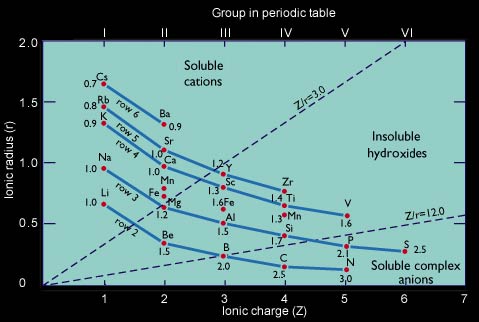The Earth Contents
4. Rock Cycle
Ionic potential is a comprehensive measure of element behaviour during weathering and erosion
The ionic potential is defined as the ratio (ionic charge)/(ionic radius). A plot of ionic charge against ionic radius shows that all elements fall into three fields, depending on their ionic potential. The field where ionic potential is less than 3 is occupied by the soluble cations, which comprise many of the most common rock-forming elements. Below this field, in the area where the ionic potential lies between 3 and 12, elements are substantially precipitated as hydroxides and are found to only a limited extent in surface waters. At ionic potentials above 12, elements are also soluble but only in the form of complex anions, for example carbon as carbonates, phosphorus as phosphates. This diagram summarises (albeit simplified) much chemical behaviour during sedimentary processes, by differentiating those elements which can be transported away from the site of weathering from those that remain behind as insoluble hydroxides.

Define ionic potential.